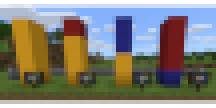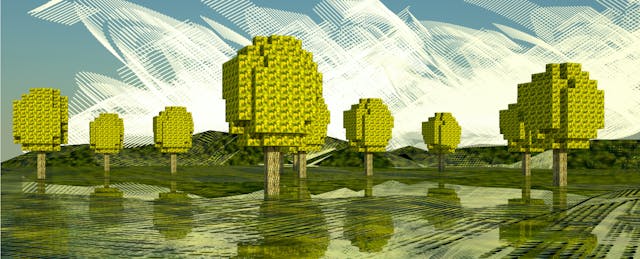I find it baffling that in 2019 I still have to explain why it’s important to play with students, especially when Fortune 500 companies are gamifying their workplace and their customer outreach, profitable gamer-culture on YouTube is on the rise and colleges have eSports teams.
It’s even more baffling when you acknowledge that throughout history, renowned philosophers and educators—including Plato, Comenius, Locke, Rousseau, Froebel, Piaget, and Papert—have lauded the power of play in teaching, especially for young learners. Modern research has continued to demonstrate that playful learning improves educational outcomes, even more so when it’s digital and multi-modal. I’ve certainly found that to be true in my years teaching non-traditional learners.
Despite popular myth, games actually discourage negative behaviors, benefit mental health and improve social skills. Of course, not all games are created equal. Certain elements are consistently present in quality games and quality learning tools. The best games are just fun, and the learning is almost invisible. I’ve always felt that the most powerful justification of learning through play is intrinsic motivation.
This is important because school tends to focus on extrinsic rewards like grades, stickers or candy, which are ineffective and possibly harmful to a student’s long-term educational needs. Games can help internalize motivation, building student perseverance and grit. Think about a child still trying to get Mario to make that jump after falling fifteen times. That same student may give up in class after one half-hearted try.

For these reasons and others, I have long sought to use games, both analog and digital, to instruct my classes filled with students who are non-traditional learners, many of them with autism. Not only do games bring learning to my students in ways that are unobtainable in direct instruction, but they also promote social connections through play and reinforce the development of 21st century skills. Perhaps better called essential modern skills at this point, these are particularly embedded in digital games. Since my early teaching days, I have sought to instruct in an open environment, allowing choice and personalization for hands-on and playful learning. With this same intention, I introduced Minecraft into my classroom.
Minecraft Education
I learned about Minecraft when I overheard students expressing excitement about playing it outside of school. I decided to check it out for myself. I didn’t really understand it at first, but it seemed like a good way to begin teaching some of the design principles I modeled in my classes. So it began as STEM design challenges for my older, more adept students. Soon though, I realized it could be used for much more. I had skilled students recreate historic moments and allowed other students to explore and learn from those creations.
It’s important to recognize that, even as the gaming universe continues to expand, Minecraft stands as a unique experience in digital games. I can think of no other game that exemplifies creativity and autonomy in play in quite the same way. I have heard it compared to digital LEGOs (another worthwhile classroom tool) which is apt, as they both provide an open space for students to easily create directly from their imagination the world as they envision it. And while I love LEGOs, Minecraft is definitely easier to build in scale and clean up, not to mention less likely to hurt your foot in a misstep. Minecraft gives children a way to use their creative faculties in an environment unbound by rules.
I hit upon real success when I began to apply it to social-emotional learning. I would come to realize that the community is one of the most powerful, as well as one of the most precarious, parts of the game. The collaborative environment that could be so beneficial for learning could also be littered with many of the other negative issues we find elsewhere online. So, I paid for a small private server for my students to explore and work together safely.
Minecraft, Autism and 21st Century Learning
I was unaware of this early on, but eventually discovered that I wasn’t the only one who found Minecraft useful as an assistive technology for people with autism. Research shows how players “modded” their environment to “support self-regulation and community engagement.” And problems inherent in an open online setting, like bullying, oversharing and miscommunication, were resolved when I learned that an education edition had been developed for Minecraft and that, even within the consumer version, a private community had been created specifically for people with autism called Autcraft.
I’ve found Minecraft to be an exemplar of those 21st century learning traits mentioned previously. The game personifies creativity and collaboration. If designs are complex, they require planning and critical thinking to solve such challenges as determining what material will meet our aesthetic or how we can adapt to the natural environment around us. When the teacher requires other design challenges—accounting for material cost or using sustainable materials—students must access higher order thinking skills.

One of the major benefits of the game, specifically for children with autism, comes with communication. Chat features are enabled with speech-to-text functionality, which lets struggling readers and writers plan and participate with the community at their own pace without the pressure of a face-to-face conversation. In fact, the game dynamic of signs that relay information is similar to the way we use vocabulary on real-world objects to teach language in early-childhood and language-challenged classrooms. This encourages social interaction in a comfortable manner within the game’s well-defined rules. Players are not just conversing for the sake of it but in an effort to successfully complete their in-game projects. That is huge for these students. And I have personally seen improvement in written language and increased verbalization in students with limited verbal skills through Minecraft game-play.
Practical Advice
I have now become skilled enough to create Minecraft worlds that engage my students in the type of learning I want to see, but I still make sure to allow enough freedom for them to have a choice in their learning. One of my projects has students with autism, who struggle with personal identity, creating a Minecraft journey that begins with self-portraits and personal narratives of their lives and families. Originally I had students do video walkthroughs to document and explain their work, but now I use speech-to-text apps to copy their ideas into writing for the built-in portfolio. There are several other game adaptations I have used from simple color-coding to using adaptive switches that have improved the game’s accessibility.

One of the most useful ways I’ve incorporated Minecraft is in recreating local environments like the school, home or a grocery store. Students with mobility or behavioral issues can now traverse those environments safely in the virtual world before attempting it in the physical world. It has really helped students feel connected to the world in ways that weren’t always possible. I loved the fact that my students were no longer confined to wheelchairs or leg braces; they could walk, create and even fly. It’s a world where they are free from ridicule, free from their real-world struggles and free to create a world that they desire. That freedom is why Minecraft continues to be a crucial tool for me and my students.


